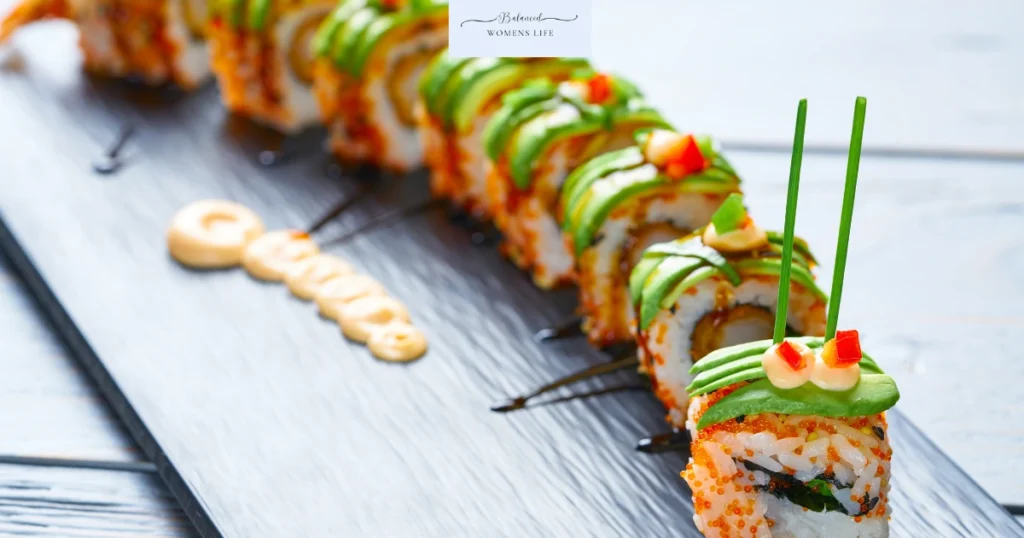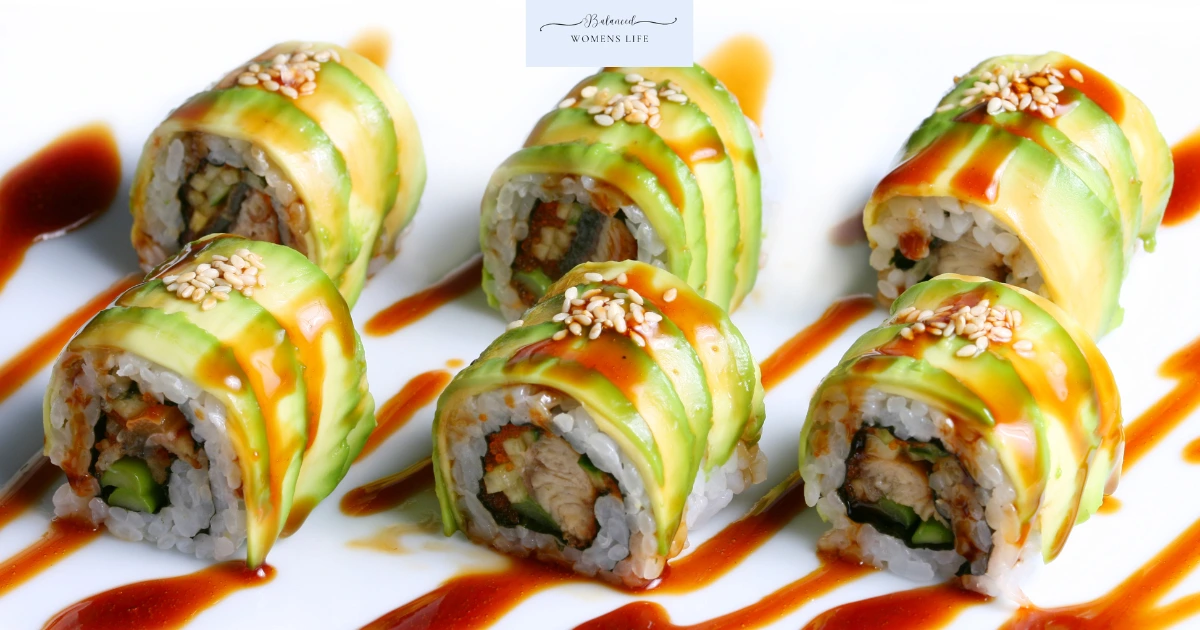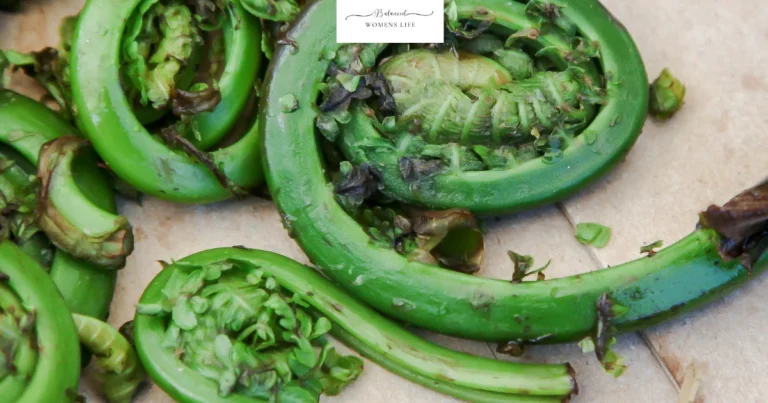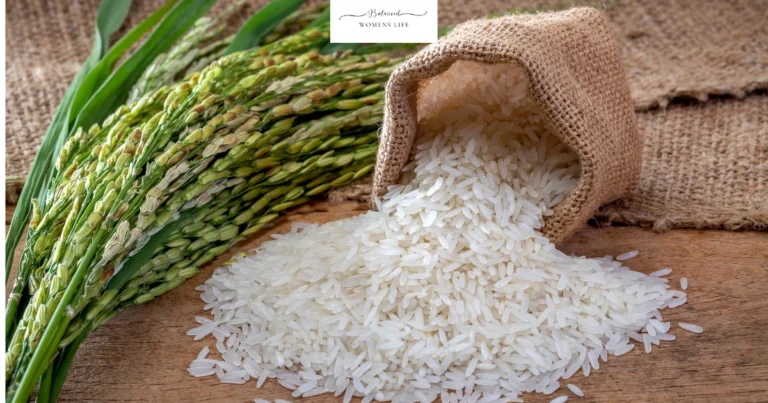Dragon Roll: The Sushi Delight You Need to Try!
Sushi lovers around the world rave about the Dragon Roll, a visually stunning and flavorful sushi roll. Whether you’re a seasoned sushi eater or a beginner, the Dragon Roll is a must-try for its unique combination of textures and tastes. In this article, we’ll explore its origins, nutritional value, global popularity, and even provide a breakdown of how it compares to other sushi rolls.
What Is a Dragon Roll?
A Dragon Roll is a type of inside-out sushi roll (uramaki) typically filled with shrimp tempura or eel and topped with thin slices of avocado to resemble dragon scales. It is often garnished with unagi sauce, sesame seeds, and sometimes tobiko (fish roe) for added flavor and presentation.
Common Ingredients in a Dragon Roll:
- Sushi rice
- Nori (seaweed)
- Shrimp tempura or grilled eel (unagi)
- Cucumber
- Avocado
- Unagi sauce (sweet soy-based sauce)
- Sesame seeds or tobiko (optional garnish)
Nutritional Facts of a Dragon Roll
Though sushi is often considered a healthy option, it’s essential to look at the nutritional breakdown. Here’s an approximate nutritional value for one standard Dragon Roll (8 pieces):
| Nutrient | Amount | % Daily Value (DV)* |
|---|---|---|
| Calories | 500-550 kcal | 25-27% |
| Protein | 20 g | 40% |
| Carbohydrates | 60 g | 20% |
| Fats | 20 g | 30% |
| Fiber | 5 g | 20% |
| Sodium | 900 mg | 39% |
| Sugars | 6 g | — |
*Percent Daily Values are based on a 2,000-calorie diet.
Health Benefits of Eating a Dragon Roll
1. Good Source of Protein
Shrimp and eel provide lean protein, which is essential for muscle growth and repair.
2. Contains Healthy Fats
Avocado is rich in heart-healthy monounsaturated fats, which can help lower bad cholesterol.
3. Provides Essential Vitamins and Minerals
The combination of seafood and vegetables offers Omega-3 fatty acids, vitamin B12, and iodine, which are important for brain and thyroid function.
4. Moderate in Calories
At around 500 calories per roll, the Dragon Roll is a satisfying yet moderate-calorie sushi option.
5. A Fun Way to Eat Seafood
For those who don’t typically enjoy raw fish, the cooked shrimp tempura or eel makes this roll a great choice!
Global Popularity of Dragon Rolls: Statistics
- Sushi is a $22 billion industry in the U.S., with Dragon Rolls being among the top 10 most ordered sushi rolls.
- In Japan, sushi restaurants make up over 10% of the total food service industry.
- Over 70% of sushi lovers prefer inside-out rolls like the Dragon Roll over traditional maki rolls.
- Google searches for “Dragon Roll sushi” have increased by 35% in the last five years, reflecting its rising popularity.
Dragon Roll vs. Other Popular Sushi Rolls
| Sushi Roll | Main Ingredients | Calories | Unique Feature |
|---|---|---|---|
| Dragon Roll | Shrimp tempura, avocado | 500 kcal | Avocado topping, eel sauce |
| California Roll | Imitation crab, avocado, cucumber | 250 kcal | Beginner-friendly, mild taste |
| Spicy Tuna Roll | Raw tuna, spicy mayo | 290 kcal | Spicy kick with fresh fish |
| Rainbow Roll | California roll base, topped with assorted fish | 475 kcal | Colorful, protein-packed |
| Philadelphia Roll | Smoked salmon, cream cheese, cucumber | 320 kcal | Rich and creamy texture |
How to Make a Dragon Roll at Home
If you want to try making your own Dragon Roll, here’s a simple step-by-step guide:
Ingredients:
- 1 cup cooked sushi rice
- 1 sheet nori (seaweed)
- 2 pieces shrimp tempura
- ½ cucumber, julienned
- ½ avocado, sliced thinly
- 1 tbsp unagi sauce
- 1 tsp sesame seeds

Instructions:
- Place nori on a bamboo sushi mat.
- Spread sushi rice evenly on the nori, leaving a small edge uncovered.
- Flip the nori over so the rice is on the outside.
- Add shrimp tempura and cucumber in the center.
- Carefully roll the sushi tightly using the mat.
- Place thin avocado slices on top and press gently.
- Slice into 8 pieces, drizzle with unagi sauce, and sprinkle sesame seeds.
- Enjoy your homemade Dragon Roll!
FAQ – Everything You Need to Know About Dragon Rolls
1. Is a Dragon Roll raw?
No! Unlike some sushi rolls, the Dragon Roll is made with cooked shrimp tempura or eel, making it great for those who don’t like raw fish.
2. How many calories are in a Dragon Roll?
A standard Dragon Roll contains 500-550 calories depending on the ingredients used.
3. Is a Dragon Roll gluten-free?
Not typically, as tempura batter contains wheat flour and unagi sauce often includes soy sauce. However, you can make a gluten-free version by using gluten-free tempura and tamari.
4. What is the difference between a Dragon Roll and an Eel Roll?
A Dragon Roll is topped with avocado and sometimes unagi (eel), while an Eel Roll is primarily made with grilled eel inside and out.
5. Can I substitute shrimp in a Dragon Roll?
Yes! You can replace shrimp with crab, tofu, or even salmon for a unique twist.
6. Why is it called a Dragon Roll?
The name comes from its appearance— the thin avocado slices resemble dragon scales, making it a visually striking sushi roll.
Conclusion
The Dragon Roll is more than just a sushi roll—it’s an experience! With its crispy shrimp tempura, creamy avocado, and sweet unagi sauce, it delivers the perfect balance of flavor and texture. Whether you’re ordering it at a restaurant or making it at home, the Dragon Roll is a must-try for any sushi lover.
Are you ready to roll? 🍣🐉







